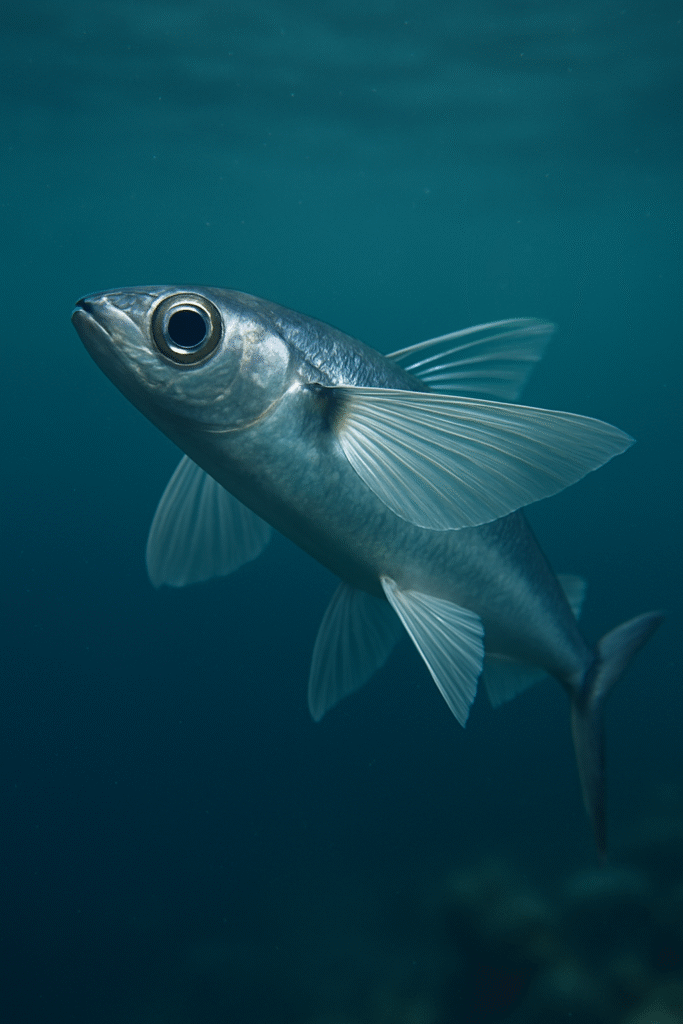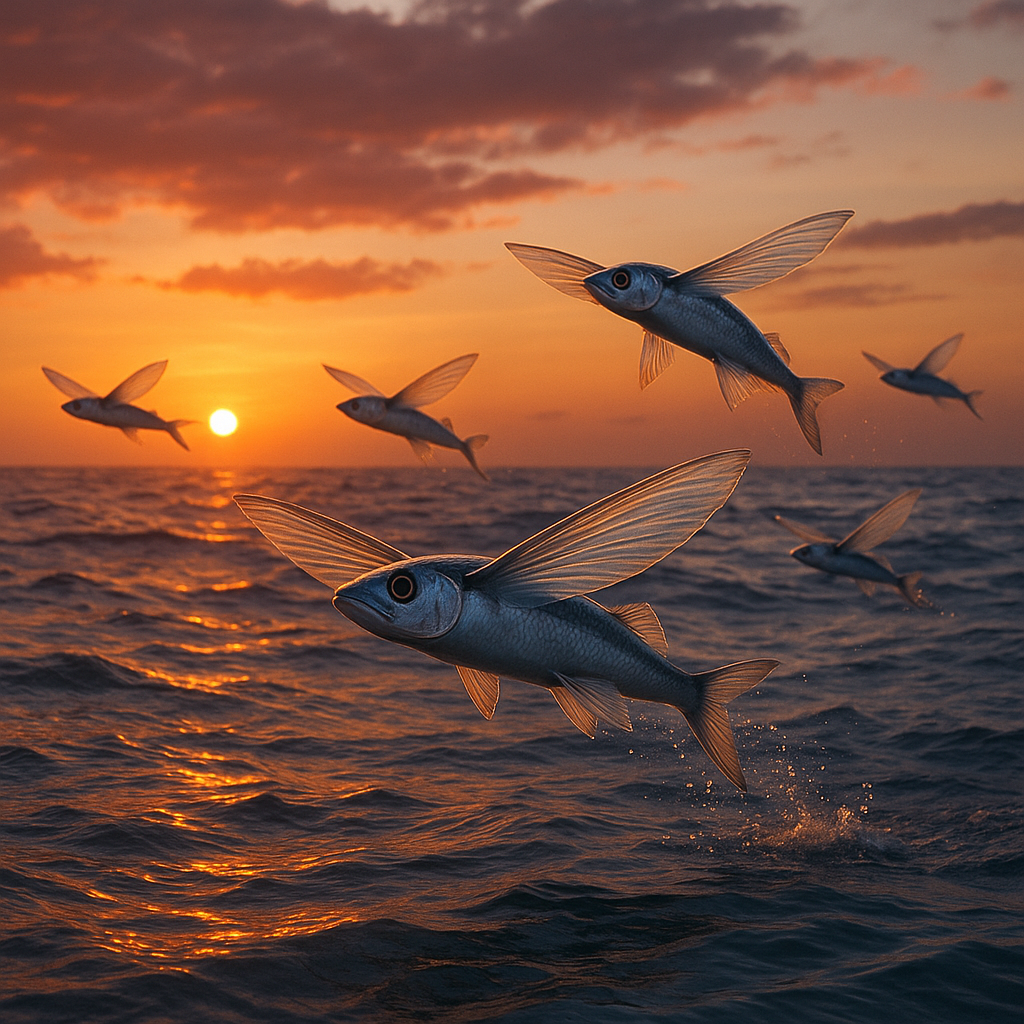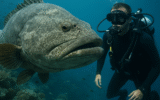In the twilight boundary where ocean meets air, an unlikely voyager rises from the sea. The flying fish, with its shimmering, translucent fins spread like gossamer wings, bursts free of the waves, soaring in brief arcs of defiance against gravity. Neither wholly of the water nor of the air, this creature embodies one of nature’s most improbable and breathtaking compromises.

A Master of Escape
The flying fish is not an evolutionary accident but a product of relentless pressure. Stalked by predators such as tuna, dolphins, and marlin, it honed an artful evasion strategy—gliding above the waves to buy precious moments of survival. With a powerful flick of its crescent-shaped tail, it launches skyward, wings flaring to catch the wind. In perfect conditions, some can glide for over 200 meters, skimming just above the surface, their silver bodies flashing like shards of light against the dark sea.
Biology of a Miracle
Though often described as “flight,” it is, strictly speaking, a glide. Enlarged pectoral fins act as airfoils, while the tail continues to beat against the water in the first seconds of takeoff, providing thrust. What makes them unique is the balance of form and function—the streamlined body, the rigid fin rays, and the instinctive timing. For a predator beneath, the fish vanishes; for a sailor above, it seems as though the sea itself has briefly grown wings.

Mariner’s Omens and Myths
For centuries, flying fish have played a role in human imagination. Sailors in the Caribbean once saw them as good omens, guiding ships across uncertain waters. In the Pacific, Polynesian navigators read their leaps as signs of shifting currents and fish-rich seas. Even today, their fleeting flights inspire awe in those who chance to witness them.
Caught Between Two Worlds
But their dual existence is fraught with danger. Birds patrol the skies, eager for a mid-air catch, while predators lurk in the depths. And now, a third threat looms: humans. Industrial fishing nets sweep thousands from the seas each year, with populations declining in regions where they were once abundant. In Japan and parts of the Caribbean, they are considered delicacies, their bodies smoked or dried, their eggs harvested as coveted caviar.
Symbol of the Threshold
In the end, the flying fish is more than a curiosity of evolution—it is a living metaphor. It embodies the tension of thresholds: between safety and risk, sea and sky, life and death. Watching one glide is to witness the ocean’s poetry—brief, fragile, luminous.

They remind us that survival often requires daring, that the boundary between worlds can be crossed if only for a heartbeat. The flying fish, humble yet dazzling, carries within its wings the essence of possibility.


Reply